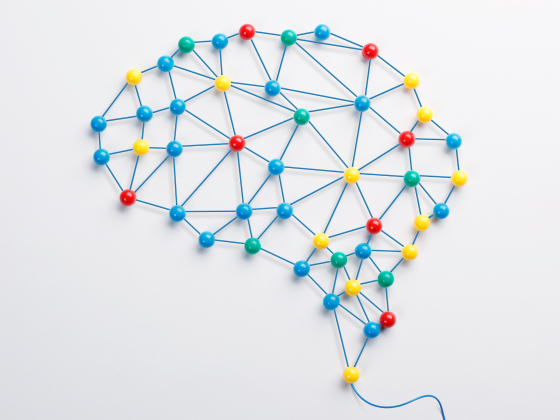Learning disabilities are neurological differences that influence how the brain processes, stores, and retrieves information—not a lack of intelligence or effort. Research shows that these differences often involve variations in structure, connectivity, and activation patterns in key brain regions responsible for language, reading, writing, reasoning, memory, and executive functions. For example, individuals with dyslexia typically show altered activity in the left temporoparietal and occipitotemporal regions, which are critical for mapping letters to sounds and fluent reading. In dyscalculia, differences may appear in the intraparietal sulcus and related networks involved in numerical understanding and working memory. Those with language-based learning disabilities often exhibit atypical connectivity between the Broca’s area, Wernicke’s area, and the arcuate fasciculus, affecting expressive and receptive language processing. Functional MRI (fMRI) studies also reveal that individuals with learning challenges may recruit additional brain regions as compensatory strategies, reflecting alternate neural pathways to accomplish tasks. Rather than indicating dysfunction, these patterns highlight a different way the brain organizes cognitive processing. At Peak Performance Institute, we leverage cutting-edge assessment and individualized neurotherapeutic techniques to support and strengthen neural pathways, helping clients improve processing speed, memory retrieval, executive functioning, and academic confidence.
About
Each person is unique in the way they learn, process, and create. However, sometimes these differences are born out of structural and functional variances within the brain and can make certain tasks incredibly challenging to complete. “Learning difficulties” encompasses a wide collection of learning disorders and struggles experienced by individuals of all ages. How they manifest and affect an individual’s functioning varies from person to person. It’s important to remember that these difficulties say nothing of the person’s intelligence—in fact most folks with learning disorders are at or above average intelligence. There is usually one area of learning that is more affected than others, like reading, math, language, or writing. The most common learning disorders are typically broken into four categories: Dyscalculia (affects math comprehension and calculation), Dysgraphia (affects handwriting and fine motor skills), Dyslexia (affects reading comprehension and writing), and Oral or Written Language Disorder (affects language-based processing skills). But there are many other ways people struggle with learning outside of these diagnosable disorders. Over time, these struggles can influence how successful we are in school or work and our sense of confidence and self-worth.
How It Affects The Brain
How We Can Help
At the Peak Performance Institute, the first step of any treatment package is a comprehensive assessment that includes QEEG brain mapping, LORETA 3D neuroimaging, various testing, and a thorough discussion of symptoms and goals. This allows us to assess for the brain patterns most commonly associated with various learning difficulties. We can even monitor a student’s heart-rate variability while completing challenging tasks associated with learning concerns to really get an in-depth understanding of just what’s happening behind the scenes.
Both neurofeedback and neuromodulation can be used to restore healthy brain wave activity and improve communication across the brain. Heart-Rate Variability Training HRV (a form of Biofeedback) and Mindfulness training can help you to gain more control over your autonomic nervous system, allowing you to modulate physiological responses like breathing, heart rate, body temperature, and muscle tension. Mindfulness is an especially important skill to practice for not only managing the stress that comes with learning struggles, but also to best prime the brain before activities.

Mindfulness can help you stay in the present moment, observe thoughts, and gain awareness around the core beliefs you hold about yourself or your abilities.
Whichever services you choose to engage with, we will work collaboratively with you to address your needs from an integrative lens and focus on improving your overall brain-body wellness so you can be the best version of you and accomplish your goals!
What the Research Says
Reading Disabilities (Dyslexia):
fMRI studies show reduced activation in left-hemisphere reading circuits, including the temporoparietal and occipitotemporal regions, which support phonological processing and word recognition.
Key studies: Shaywitz et al. (Yale), Pugh et al. (Haskins Laboratories).Neural Connectivity Differences:
Research finds atypical connectivity between Broca’s area, Wernicke’s area, and the arcuate fasciculus in individuals with language-based learning disorders, affecting speech processing and comprehension.
Key studies: Catani & Jones; Vandermosten et al.Working Memory & Executive Function:
Learning disabilities often involve differences in the prefrontal cortex and frontoparietal networks, which play a central role in planning, organizing, and holding information in mind.
Key studies: Klingberg et al.; Swanson & Alloway.Math Disabilities (Dyscalculia):
Neuroimaging consistently shows altered activity in the intraparietal sulcus, an area crucial for number sense and quantity representation, as well as challenges in related working-memory circuits.
Key studies: Dehaene et al. (INSERM); Kaufmann et al.Compensatory Neural Pathways:
Many individuals with learning difficulties activate additional brain regions when reading, listening, or solving problems—evidence of the brain’s ability to rewire and adapt over time.
Key studies: Eden et al. (Georgetown); Richards et al. (UW).Neuroplasticity & Intervention:
Studies show that targeted interventions—such as structured literacy, cognitive training, and neurofeedback—can strengthen neural pathways and improve academic performance.
Key studies: Temple et al.; Meyler & Breznitz.
Ready to Take the First Step?
Discover the clarity and confidence that comes from understanding your condition. Schedule a consultation today—and let’s start building a path toward healing, growth, and potential.
Call us at 512-347-8100
Email admin@peakinstitute.com

